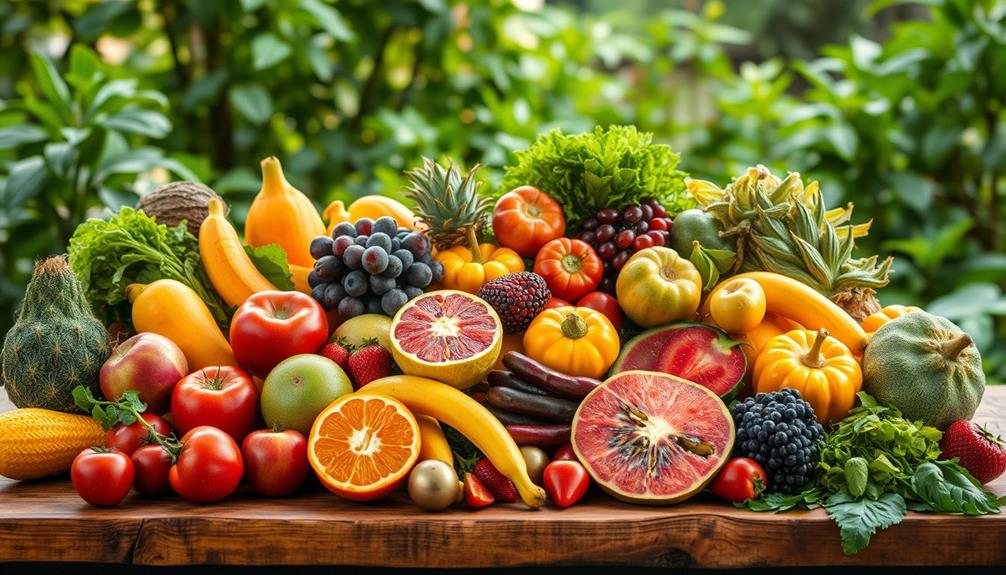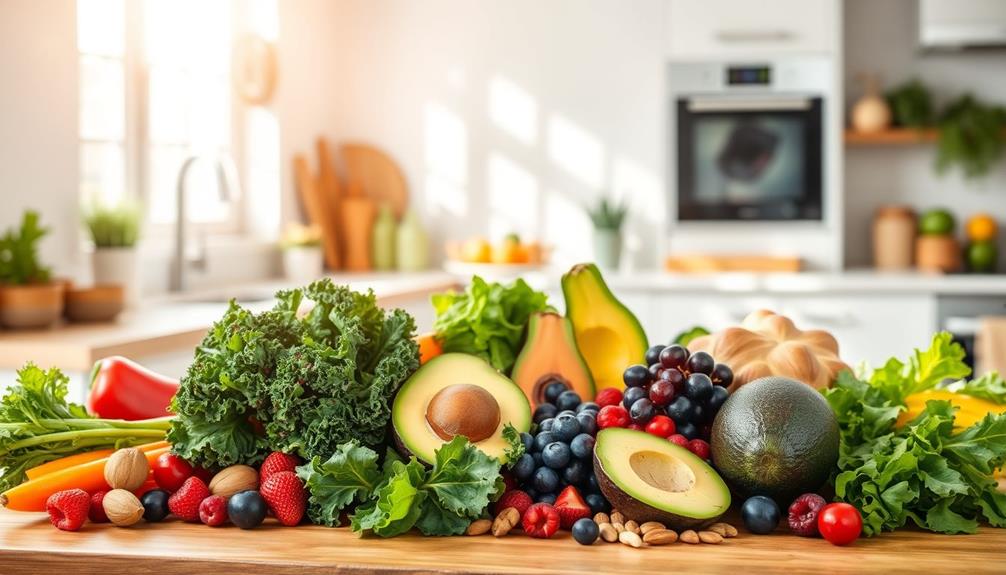If you're looking for the term that describes someone who only eats raw food, you'd call them a "raw foodist." This lifestyle emphasizes unprocessed and uncooked foods like fruits, vegetables, nuts, and seeds. Some may follow specific variations, such as raw veganism, avoiding all animal products, or engaging in raw carnivorism, which includes uncooked meats. Raw foodists believe that eating foods in their natural state preserves nutrients and enzymes. However, there are health benefits and potential risks to evaluate. Stick around, and you can learn more about the different diets and their impact on health. Many raw foodists also argue that a raw food diet reflects early man’s dietary preferences, as our ancestors would have primarily consumed raw foods before the invention of fire. They believe that cooking food can destroy essential nutrients and enzymes, leading to a reduction in the overall nutritional value of the diet. However, some experts caution that a completely raw food diet may not provide all the necessary nutrients and could potentially lead to deficiencies if not carefully planned. It’s important to carefully consider the potential benefits and risks before adopting a raw food diet.
Key Takeaways
- Individuals who exclusively consume raw plant-based foods are called "raw vegans."
- Those who include uncooked animal products in their diet are known as "raw carnivores" or "raw meat eaters."
- A person focusing solely on fruits is referred to as a "fruitarian."
- Someone who primarily drinks raw juices is called a "juicearian."
- The general term for someone following a raw food diet is simply "raw foodist."
Definition of Raw Foodism
Raw foodism is a dietary approach that emphasizes eating unprocessed and uncooked foods, mainly focusing on fruits, vegetables, nuts, seeds, and sprouted grains.
When you adopt this lifestyle, you're likely to encounter the term "raw vegans," which refers to those who strictly consume plant-based, raw foods. On the other hand, some individuals include raw animal products in their diet and are simply called "raw foodists."
The raw food diet generally restricts food temperatures to below 104-118°F (40-48°C) to help preserve vital nutrients and enzymes. Advocates of raw foodism suggest that this diet can lead to various health benefits, such as improved digestion and increased energy, particularly with the benefits of antioxidants found in many raw foods.
However, it's important to approach these claims with caution, as scientific consensus on the benefits remains uncertain.
It's also important to be aware of potential nutritional deficiencies, especially in protein, vitamin B12, and calcium, if you don't plan your meals carefully.
Following a raw food diet can be rewarding, but it requires diligence to guarantee you're meeting your nutritional needs while enjoying the benefits of unprocessed foods.
Types of Raw Food Diets

When exploring types of raw food diets, you'll find options like raw veganism, which focuses exclusively on unprocessed plant foods.
It's worth mentioning that some raw food enthusiasts also incorporate health-promoting practices, such as using essential oils for various wellness benefits, including essential oils for respiratory health.
You might also consider animal-based raw diets, which incorporate uncooked meats, eggs, and dairy.
Additionally, understanding the historical practices that shaped these diets can offer valuable insight into their evolving nature.
Raw Vegan Diet Explained
The raw vegan diet emphasizes unprocessed plant foods, allowing you to enjoy a variety of fruits, vegetables, nuts, seeds, and sprouted grains without cooking. This diet restricts all animal products and adheres to the principle of not heating food beyond 104-118°F (40-48°C).
Many people choose the raw vegan lifestyle for its claimed health benefits, such as improved digestion, increased energy, and weight loss. Additionally, raw foods can enhance nutrient absorption and support digestive health with high water content and fiber, making it a popular choice for those seeking a healthier lifestyle boosts immune system function.
However, it's crucial to be cautious, as the raw vegan diet may lead to nutrient deficiencies, particularly in protein and vitamin B12. While there are various raw food diets, including raw animal food diets that incorporate uncooked meats and dairy, the raw vegan approach focuses solely on plants.
Subgroups like fruitarians, who primarily consume fruits, also fall under the broader umbrella of raw food diets. Historically, raw foodism has roots in ascetic practices among monks and hermits, gaining modern popularity through advocates like Maximilian Bircher-Benner.
Despite its appeal, the British Dietetic Association classifies raw veganism as a fad diet, raising concerns about nutritional imbalances. Therefore, if you're considering this diet, make sure you plan your meals carefully to maintain balanced nutrition.
Animal-Based Raw Options
Among the various types of raw food diets, animal-based raw options offer a distinct approach for those who include uncooked animal products in their meals. If you choose to eat raw animal products, you're likely part of a group often referred to as "raw carnivores" or "raw meat eaters." This diet emphasizes consuming uncooked meats, fish, eggs, and dairy while avoiding any cooked or processed foods.
Such dietary choices can sometimes reflect underlying emotional needs, similar to how individuals with BPD may exhibit fluctuating behaviors based on their emotional states, leading to complex relationship dynamics emotional dysregulation in BPD.
The raw animal food diet stands out as a specific subset of raw foodism, differing markedly from other raw diets like raw veganism, which excludes all animal products. For those on this diet, the focus is purely on the benefits of uncooked animal foods.
You might also encounter subgroups like fruitarians or juicearians, who prioritize fruits or raw juices, respectively.
Additionally, the raw Paleolithic diet promotes a return to the dietary habits of early humans, emphasizing the health benefits believed to come from eating raw animal products while avoiding grains and legumes.
If you're exploring raw food diets, understanding these animal-based options can help you better align your choices with your dietary preferences.
Historical Raw Diet Practices
Exploring historical raw diet practices reveals a fascinating array of approaches to food consumption that have evolved over time. You can trace the roots of raw food diets back to ancient dietary habits, like the raw Paleolithic diet, which emphasized raw animal foods while steering clear of grains and legumes. This reflects a time when our ancestors thrived on uncooked meats and eggs.
Additionally, modern enthusiasts often turn to various brewing methods, such as French press coffee, which can also influence dietary choices by promoting a more mindful consumption of beverages.
In contrast, raw veganism emerged as a modern approach focusing solely on unprocessed plant foods kept below 40-49°C. It's noteworthy that early proponents of raw diets included ascetic hermits and monks, such as John of Egypt and Ethiopian monk Qozmos, who adopted these practices for spiritual reasons.
The diversity within raw food diets is striking, with subgroups like fruitarians, who primarily eat fruits, and juicearians, dedicated to raw juices. Figures like Maximilian Bircher-Benner helped popularize these lifestyles in the early 20th century, promoting the idea of consuming raw foods for health benefits.
Health Benefits and Risks
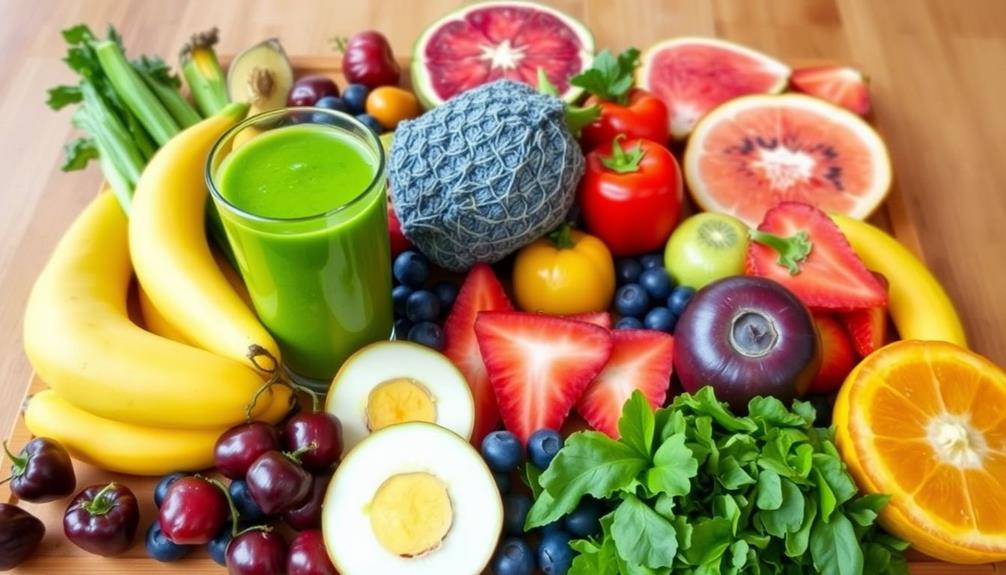
When you adopt a raw food diet, you can enjoy the nutritional perks of fresh fruits and vegetables, boosting your intake of essential vitamins and minerals.
This diet can also align with a focus on natural remedies alongside conventional foods, promoting overall well-being natural remedies alongside conventional foods.
However, it's vital to be aware of potential health risks, like nutritional deficiencies and foodborne illnesses, that may arise from this eating style.
Balancing your diet is key to reaping the benefits while minimizing the risks.
Nutritional Advantages of Raw
Raw food diets offer a vibrant array of health benefits, primarily due to their emphasis on fresh fruits and vegetables. By focusing on raw foods, you can enjoy significant nutritional benefits that can enhance your overall well-being.
Proper diet for pets can also inspire you to incorporate more fresh produce into your meals. Here are three key advantages of adopting a raw diet:
- Rich in Nutrients: Fresh fruits and vegetables are packed with vitamins, minerals, and fiber, which can improve digestion and boost your immune system.
- Weight Management: Raw diets often lead to lower calorie intake by reducing processed foods and added sugars, making it easier for you to manage your weight.
- Skin Health: Many raw foods contain antioxidants that may promote healthier skin and reduce the risk of chronic diseases, such as heart disease.
While the nutritional benefits of a raw diet are appealing, it's crucial to plan your meals carefully to avoid potential deficiencies in protein, vitamin B12, and essential fatty acids.
Potential Health Risks
While the nutritional benefits of a raw food diet are enticing, it's important to be aware of the potential health risks involved. One major concern is exposure to foodborne pathogens like E. coli and Salmonella. Since cooking is essential for killing harmful bacteria and parasites, relying solely on raw foods can increase your risk of foodborne illnesses.
This is similar to the significance of early detection in health screenings like mammography guidelines, which aim to catch potential issues before they exacerbate.
Additionally, long-term adherence to a raw food diet, especially strict raw vegan plans, may lead to nutritional deficiencies. You could find yourself lacking essential nutrients such as protein, calcium, and vitamin B12, which are crucial for your overall health.
Studies even suggest that these diets might contribute to low serum HDL cholesterol levels and elevated plasma homocysteine, both of which are risk factors for cardiovascular diseases.
It's particularly important to note that children and pregnant women face heightened risks when following a raw food diet. Careful dietary planning is essential to prevent nutrient deficiencies that could negatively impact growth and development.
While some research points to potential benefits, the scientific consensus remains cautious, emphasizing the need to balance the allure of raw foods with awareness of these health risks.
Dietary Balance Importance
Achieving a well-rounded dietary balance is fundamental for anyone considering a raw food diet. While this diet focuses on eating fresh fruits and vegetables, it's imperative to confirm you're not missing out on essential nutrients. Proper air quality is also important for overall health, as it can affect your energy levels and metabolic function; consider investing in an air purifier for a cleaner environment air purifier maintenance.
Here are three key considerations to maintain balance:
- Protein and Nutrients: Raw food diets can be low in protein, vitamin B12, and omega-3 fatty acids. Incorporating raw dairy or other protein sources is essential to meet your body's needs.
- Digestive Health: The high fiber content from fruits and veggies can boost digestion but may cause discomfort if you immerse yourself too quickly. Gradually introduce these foods to avoid digestive issues.
- Caloric Intake: Raw food diets can aid in weight management due to their low calorie density. However, be mindful to consume enough calories to fuel your energy needs.
Neglecting these aspects can lead to health risks, including elevated homocysteine levels and low HDL cholesterol, which could increase your chances of cardiovascular problems.
Aim for balance to enjoy the benefits of a raw food diet while minimizing potential downsides.
Nutritional Considerations
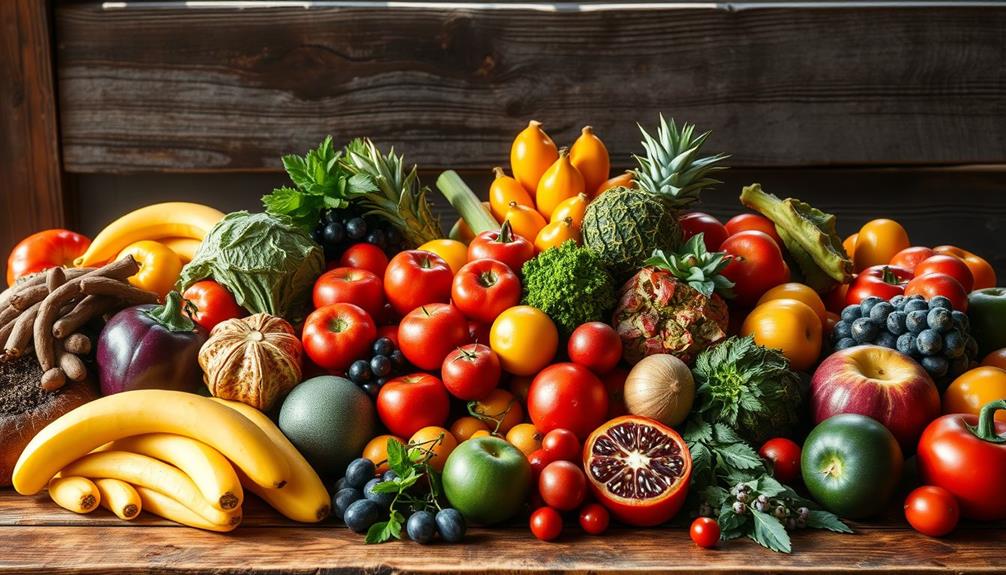
A raw food diet emphasizes fresh fruits and vegetables, offering a bounty of essential nutrients and fiber that promote digestion and overall health. However, if you strictly adhere to this diet, you might face nutritional deficiencies, particularly in protein, vitamin B12, calcium, and iron. To mitigate these risks, careful meal planning and potential supplementation are vital.
Cooking certain foods can enhance nutrient absorption. For instance, cooking tomatoes increases the bioavailability of lycopene, a beneficial antioxidant. Additionally, a lack of variety in a long-term raw food diet can lead to imbalances, like low serum HDL cholesterol and elevated plasma homocysteine levels, which are associated with cardiovascular risk.
Food safety is another concern; raw foods can harbor pathogens that cooking typically eliminates, increasing the risk of foodborne illnesses.
Here's a table summarizing key nutrients and potential deficiencies:
| Nutrient | Raw Food Sources | Cooked Food Benefits |
|---|---|---|
| Protein | Nuts, seeds, legumes | Enhanced absorption |
| Vitamin B12 | Fortified foods required | Naturally found in meats |
| Calcium | Leafy greens, almonds | Bioavailability improves |
| Iron | Spinach, lentils | Cooking increases absorption |
Cultural Perspectives on Raw Food

Cultural perspectives on raw food diets reveal a rich tapestry of beliefs and practices that vary considerably across the globe. You'll find that cultural acceptance of raw foods often hinges on local customs and historical practices.
For instance, traditional Japanese cuisine celebrates dishes like sushi, showcasing raw fish as a delicacy. In contrast, some cultures view raw meat with skepticism or outright taboo. Additionally, the emphasis on a balanced diet rich in fruits and vegetables plays a significant role in how various cultures approach raw food consumption.
Here are three key points to reflect on:
- Indigenous Practices: Many indigenous communities have long relied on raw foods, honoring traditional practices that align with local resources and the natural state of food.
- Nutritional Beliefs: Cultures like the Inuit consume raw animal products, believing these foods provide essential nutrients that cooking can diminish.
- Ethical Considerations: For some, embracing a raw food diet reflects a desire for natural living and sustainable practices, aligning their eating habits with broader ethical beliefs.
Social media has further amplified these diverse cultural interpretations, showcasing how raw food practices can be influenced by global trends.
As you explore these perspectives, you'll gain a deeper appreciation for the complex relationship between culture and diet.
Misunderstandings About Raw Diets
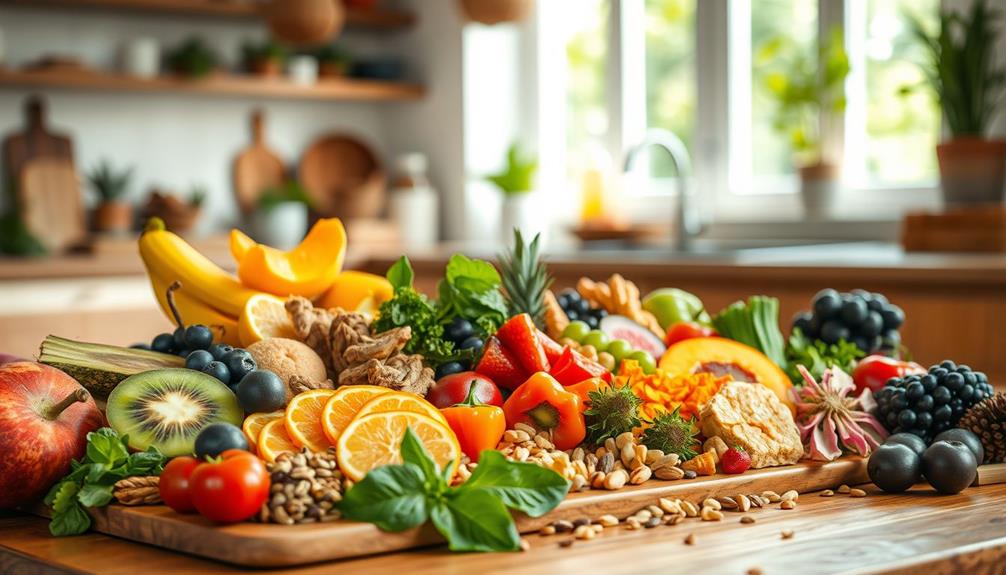
Steering through the world of raw diets can be tricky, as many people hold misconceptions that blur the lines between various dietary practices. One common misunderstanding is equating veganism with raw foodism. While "raw vegan" refers specifically to those who consume only raw plant-based foods, a "raw foodist" may include both raw plant and animal products in their diet. This distinction is vital for understanding the diversity within raw diets.
Moreover, media portrayals often conflate raw food practices with extreme health trends, leading to further confusion. Some believe that all raw food diets exclude animal products, but that's not the case. Variations exist, such as raw animal food diets, which include uncooked meats and dairy.
Cultural influences and personal beliefs can also cloud public understanding of raw diets. You might encounter individuals who insist on a singular definition, but the reality is far more nuanced.
Recognizing these misunderstandings can help you navigate your own dietary choices and engage in informed conversations about raw food, whether you're exploring vegan options or considering the inclusion of animal products.
Prominent Figures in Raw Foodism
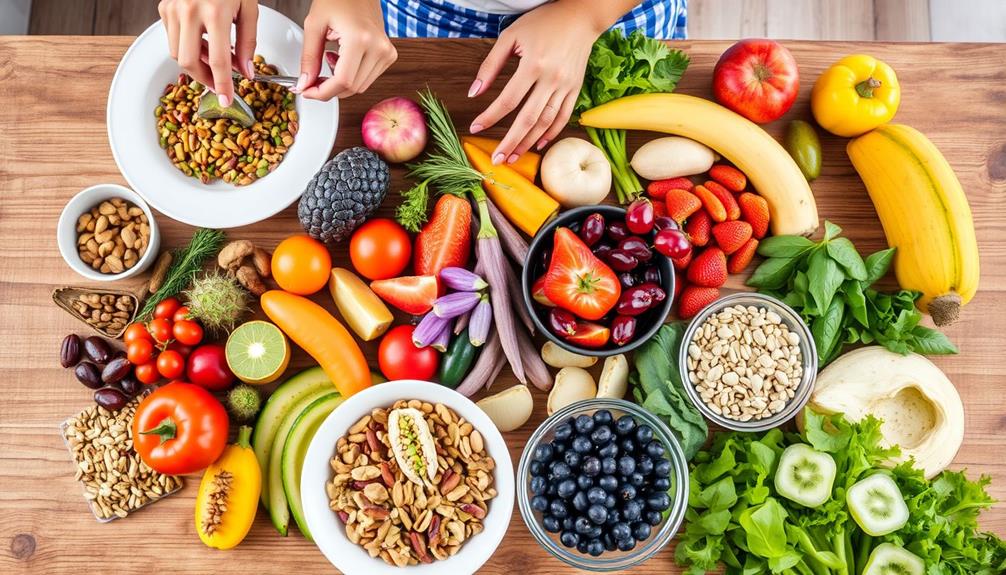
Who are the key influencers shaping the raw food movement? Several prominent figures have greatly impacted raw foodism, promoting the health benefits of a raw food diet through their writings and teachings. Here are three significant contributors:
- Eugene Christian – An early advocate, he authored numerous books in the early 20th century, laying the foundation for the raw food movement.
- Ann Wigmore – Known for her emphasis on wheatgrass and living foods, Wigmore's work has inspired many to embrace raw foodism for its health benefits.
- Norman W. Walker – A pioneer in the mid-20th century, he wrote extensively about the advantages of consuming raw fruits and vegetables, influencing many to adopt a raw food diet.
Other influential figures include George Julius Drews, who popularized raw food in the 1930s, and Dr. Maximilian Bircher-Benner, who established a sanatorium in Switzerland promoting raw foods in the early 1900s.
Leslie Kenton's "Raw Energy," published in 1984, further popularized a high-raw food diet, showcasing the potential health benefits.
These individuals have played vital roles in shaping the ongoing raw food movement.
Frequently Asked Questions
What Are Raw Meat Eaters Called?
You might call raw meat eaters "raw carnivores" or simply "raw meat eaters." They embrace a diet focused on uncooked animal products, often enjoying dishes like steak tartare and facing significant health risks from bacterial infections.
What Is It Called When You Eat Raw Food?
You might think eating raw food is extreme, but it's a vibrant lifestyle! When you eat primarily raw foods, you're often called a raw foodist, emphasizing fresh, unprocessed ingredients to maximize nutrients and flavor.
What Does It Mean to Only Eat Raw?
Eating only raw means you choose unprocessed, uncooked foods, focusing on fruits, vegetables, nuts, and seeds. This diet emphasizes preserving nutrients and enzymes, believing raw food enhances health and energy without cooking altering its benefits.
What Is a Fancy Name for Raw Food?
If you're looking for a fancy name for raw food, consider "crude cuisine" or "living foods." These terms highlight the emphasis on freshness and nutrients, appealing to those who value unprocessed, vibrant meals.
Conclusion
To sum up, whether you embrace raw foodism for health reasons or a sustainable lifestyle, it's clear that this diet's appeal lies in its simplicity and purity. As you navigate the vibrant world of raw foods, remember that every choice you make is a step towards a more conscious way of living. So, are you ready to savor the freshness of nature's bounty and redefine your relationship with food? The journey awaits you, ripe with possibilities.

